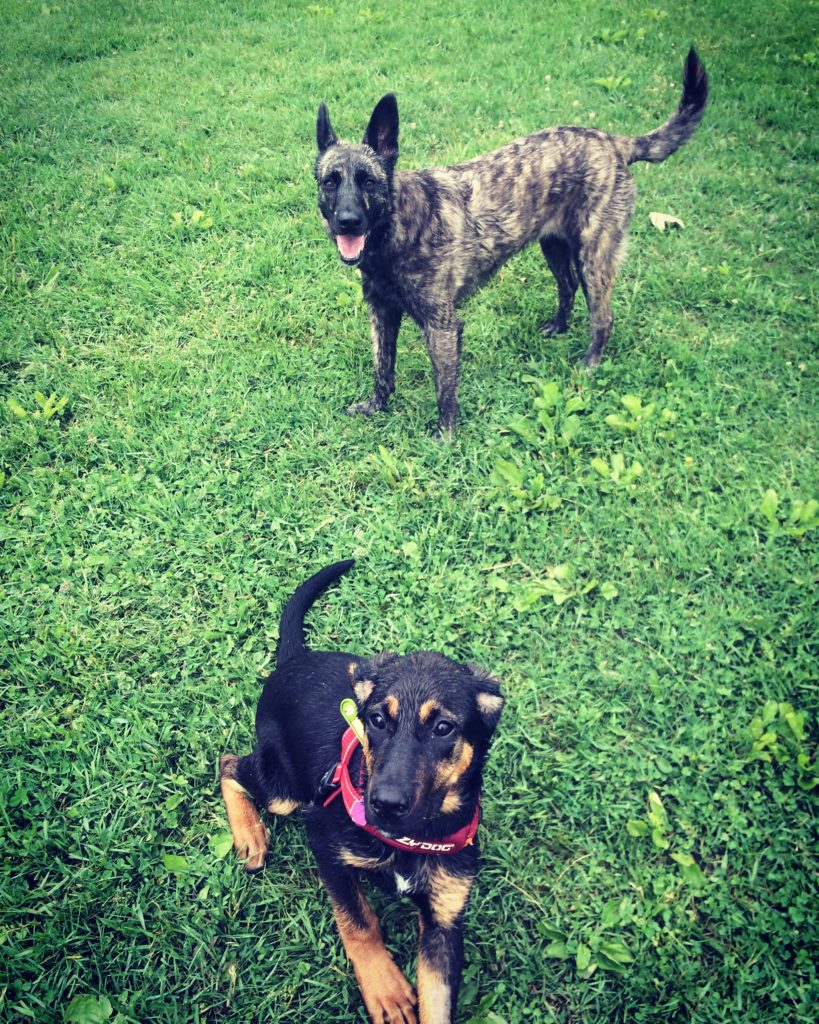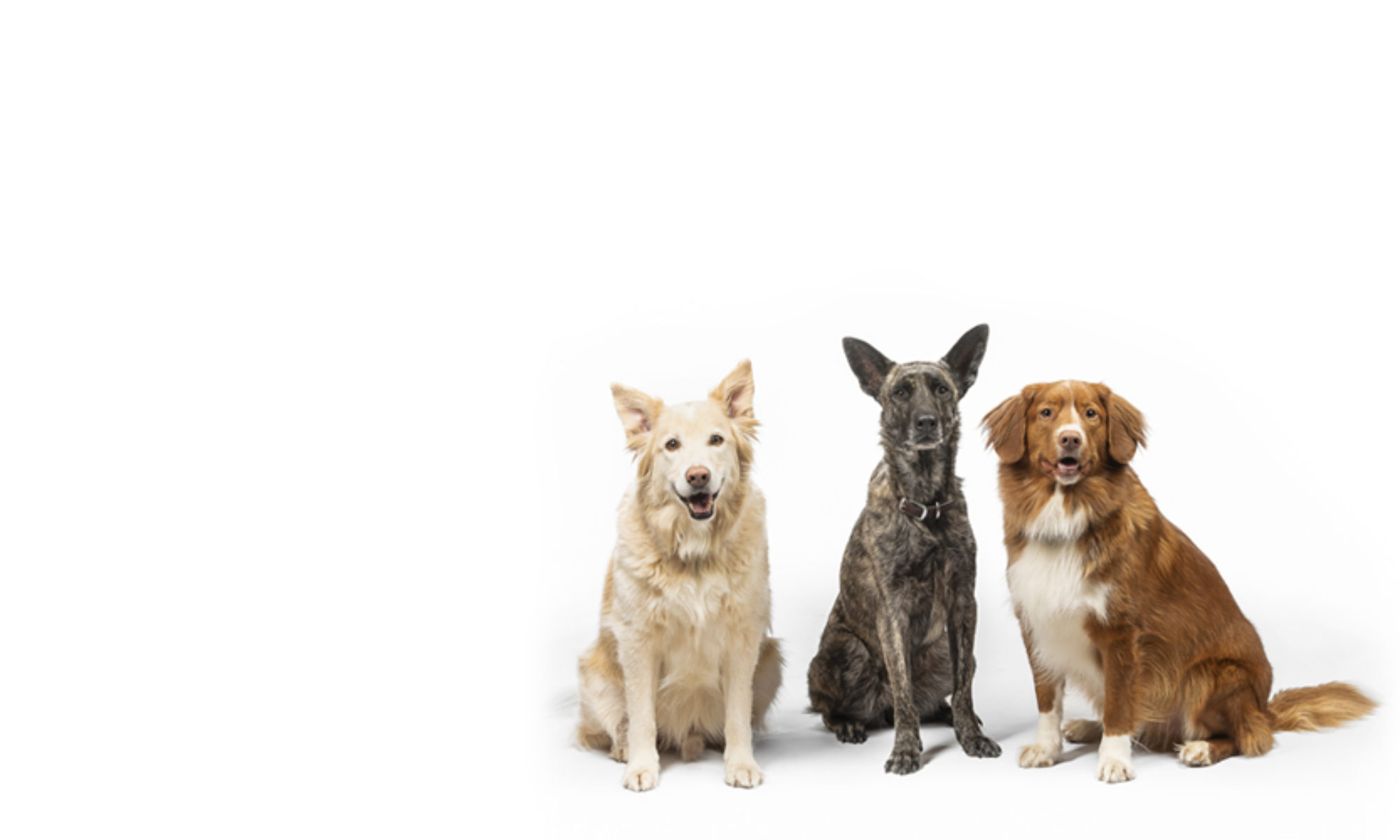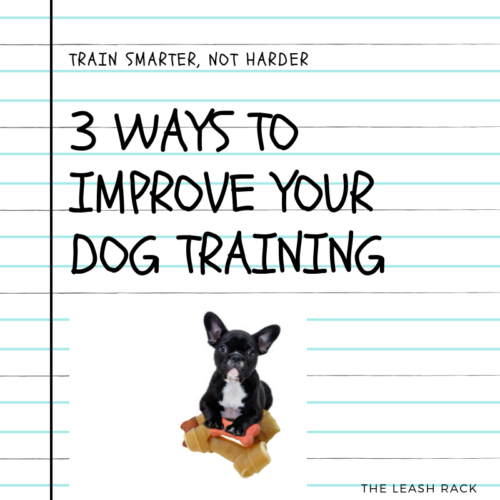Responsible dog ownership requires learning how to effectively communicate with your dog and this requires consistency, hard work and thoughtfulness. Like going to the gym, or training for any athletic event – you get what you put in and reap the benefits of the process as you get better at it. If you do nothing to better your situation with your dog, the gaps in our training eventually showcase themselves in embarrassing or just plain terrible behaviours.
As bleak as that sounds, that doesn’t mean the training process needs to be boring, frustrating, or difficult. On the contrary, unlike marathon training, training your dog doesn’t need to be painful at all. Small adjustments in your training schedule and plans can make the world of difference in learning for you and your dog. By eliminating frustration and poor training techniques while ensuring we are creating realistic and fair training plans – the sky is the limit for our dogs and for us.
TIP #1: Choose your Training Environment Wisely
One of the easiest ways to help improve your training is to choose your training environment wisely!
The environments in which dogs learn play a pivotal role in how successful they are. Imagine trying to teach your dog how to lay down or practice a focused heel. If these behaviours are new to your dog, a quiet and familiar environment would be the best choice to start your training. The fact that your dog is not distracted or over stimulated while learning will help them be successful. Imagine these same new skills being taught at a park you frequent where they run and catch a frisbee or play with other dogs. The learning process would be very challenging in the second scenario.
For this reason, learning tends to be the most successful in the home for new behaviours and skills. This means that a quiet bedroom, basement or even kitchen can be the perfect location to learn for your dog (at any age!)
If your dog is already proficient in skills in the home, great! You can make the environment incrementally more challenging. Your backyard or drive way are great places to continue to build known behaviours in the home and are still relatively boring to your dog. As trainers, we see people expecting too much from their dogs too quickly, and in order to avoid this you need to understand that your dog will learn best in familiar environments before making it more challenging.
A good way to test this theory? Ask your dog to Sit ten times in your home. If they struggle with this then you know where your work is cut out for you before heading out into the real world.
TIP #2: Prep your Area and Gear
Once you have chosen your dog’s training environment, now it’s time to prepare your area! Removing any obvious stimuli in the form of dog beds, couches, or toys will help your dog remain interested and engaged with you. This is especially true if your dog is young, very playful, or becomes easily frustrated. By cleaning up and creating an empty calm space, you will give your dog the best chance to learn with you rather than ignore you.
Next, prepare your gear! This means you should have your clicker (if you choose to use one) and appropriate training gear ready to go. If you are practicing Loose Leash Walking, keep your dog’s harness or leash close by. If you are working on Mat Training skills, have your mat up on a shelf and within reach. If you are working on leave its, or any forms of distraction work, set that up ahead of bringing your dog into the training environment.
The benefits of preparing your space and collecting your gear are twofold. The first benefit is that by preparing your area you must create a training plan in advance. You must have a specific idea of the skills you wish to improve upon with your dog for that session. In the same way that coaches in sports plan your workout, you are planning your dog’s learning, which makes the time spent with them more effective. The second benefit is that it allows us to prepare and predict our dogs interactions with certain stimuli. For example, if you struggle with your dogs impulse control, planning out your training area will act as a preventative measure for inappropriate and predictable behaviours such as counter surfing, stealing treats or chewing on shoes. Since the area will be clear of obstacles that could have otherwise been a distraction, your dog will be more likely to make good choices that fall in line with your training plan.
The final step in prepping your area is having your training rewards ready to go – whether this is a toy or food. There is nothing worse than having your dog perform a correct behaviour only to have the reward not be immediately given the precise moment she correctly behaves. This creates confusion. Take our word for it when we say ‘meal prepping’ your dogs training treats ahead of time and having them on hand is worth it and will improve your dogs learning.
Tip #3: Celebrate Your Dog
Celebrating your dogs goofiness, smarts and success are often an overlooked part of dog training but is essential to the training success of of your dog. Unfortunately we are often too quick to see and pay attention to the flaws in our animals. If Fido decides to counter surf, we yell, scold and clap our hands and make it a big deal – if Fido quietly lays outside of the kitchen limits, we are just naturally less inclined to give this as much attention.
Why? Well we are wired to see acts of excitement, novelty and loudness quicker than quiet ‘good choices’ but it is in these exact moments where we should be celebrating our dogs and rewarding them. Rewards can come in the forms of food, toys (a game of tug for example) or access to environmental rewards (such as outdoor playtime or sniffing particular areas on a walk). Studies have shown that play after training sessions increases the dogs ability to learn and retain material – so play! Celebrate your dogs progress and lighten up the mood.
BONUS TIP#4: Leave your Phone at Home (I mean it!)
The final little tip to improve your training is probably the most challenging – and yes, you read it right: Leave your phone at home. Turn it off. Silence it. Stay off it when interacting with your dog. Consider your training time with your dog the same way you consider a meeting with a boss or a co-worker. It would be plain rude to whip out your phone mid-meeting and text away, or receive a phone call. As tempting as it is, leave it out of your sessions.
The temptation of having our cellphones readily available to us destroys training techniques and can create confusion in your dogs learning. Imagine your dog performs a behaviour correctly, only for you to check out of the session to check your most recent messages? You leave your dog hanging and overtime create a dog who wants to check out just as much as you do!
Be fair to your dog. In reality, training should take minimal time (five to ten minutes tops a session) and instead should be considered quality time. You don’t get this quality by constantly checking out to check your phone – in any relationship, canine or otherwise.

Obedience does not need to be a boring or a strict affair. By implementing small changes to your training schedule, environment and plan you will create good habits, create cleaner training techniques and maximize the your bond with your dog.
Happy Training!

